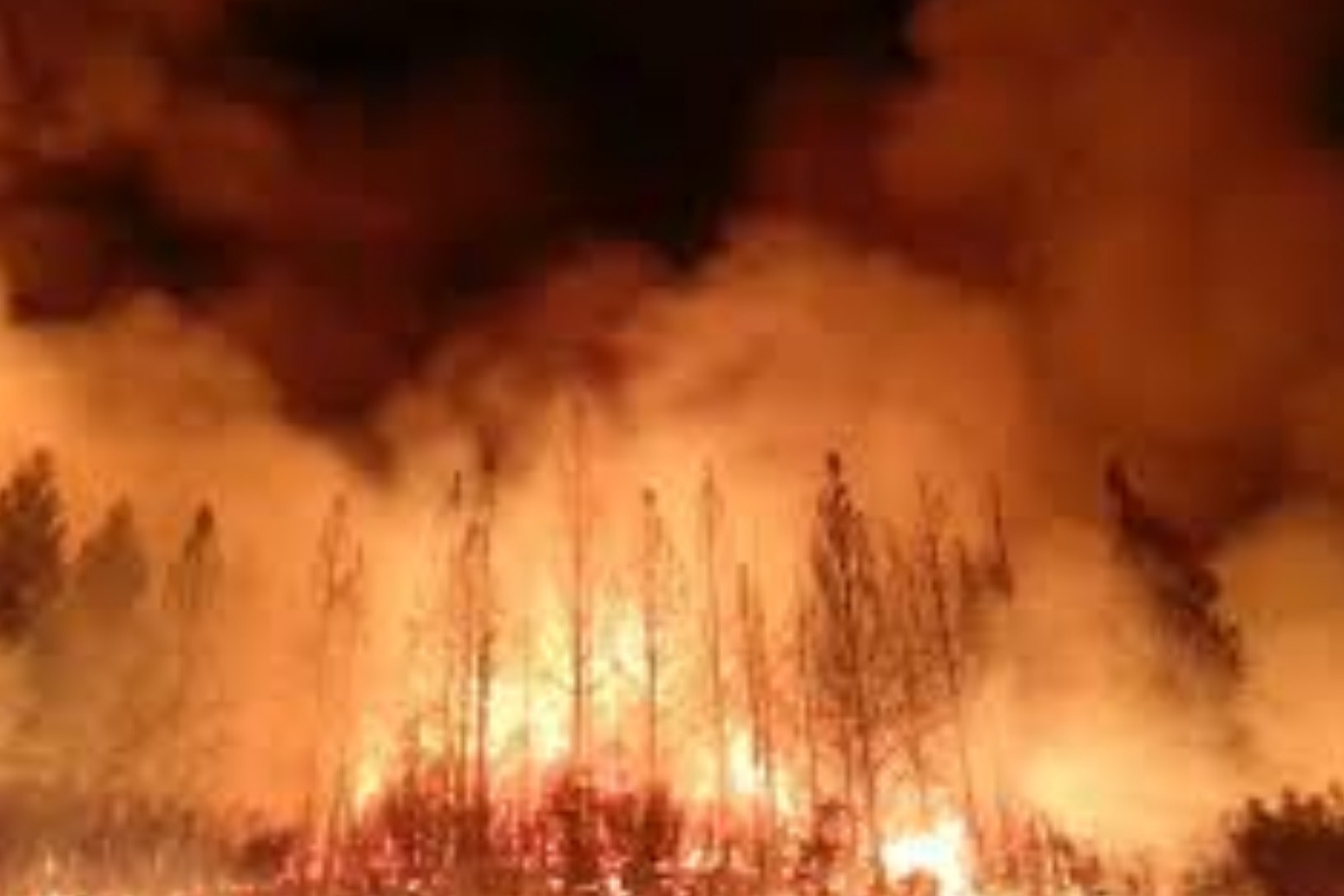
Massive wildfire becomes largest in California history
The Mendocino Complex became the largest wildfire in Californian history on Monday as it raged at the southern tip of the Mendocino National Forest where crews battled to keep flames from descending into foothill communities.
The Mendocino Complex Fire, made up of two separate conflagrations that merged, grew to 283,800 acres (114,800 hectares) and was still growing, California Department of Forestry and Fire Protection said.
The fire surpassed the Thomas Fire, which burned 281,893 acres in Santa Barbara and Ventura counties in 2017, as prime weather conditions are expected to persist.
"Unfortunately, they're not going to get a break anytime soon," National Weather Service meteorologist Brian Hurley said of firefighters who had cut buffer lines around 30 percent of the blaze. "It's pretty doggone hot and dry, and it's going to stay that way."
Hurley said temperatures could reach 110 degrees (43 Celsius) in Northern California over the next few days with gusty winds fanning the flames.
The Mendocino Complex, which has destroyed 75 homes and forced thousands to flee, is the largest of eight major wildfires burning out of control across California, prompting U.S. President Donald Trump to declare a "major disaster" in the state.
A total of nearly 3,900 people were fighting the Mendocino Complex Fire, including crews from Arizona, Washington and Alaska.
Some 200 soldiers from the 14th Brigade Engineer Battalion at Joint Base Lewis-McChord near Tacoma, Washington, have also been called in to help in one of the most destructive fire seasons on record.
On Sunday, 140 fire managers and specialists from Australia and New Zealand underwent special training and were issued safety gear at the National Interagency Fire Center in Boise before being deployed to fires in the Pacific Northwest and California.
Crews battling the Mendocino Complex on Monday were focusing on keeping flames from breaking through fire lines on a ridge above the foothill communities of Nice, Lucerne, Glen Haven, and Clearlake Oaks, said Tricia Austin, a spokeswoman for Cal Fire.
"If it were to be carried outside of those lines they have on the ridge, it could sweep down into those communities, that's what we're trying to prevent," she said.
Elsewhere in California, evacuations were ordered for cabins in Cleveland National Forest canyons in Orange County on Monday afternoon after a blaze broke out and quickly spread to blacken some 700 acres (283 hectares).
The Carr Fire - which has torched 163,207 acres (66,047.5 hectares) in the scenic Shasta-Trinity region north of Sacramento since breaking out on July 23 - was 45 percent contained.
The Carr Fire has been blamed for seven deaths, including a 21-year-old apprentice PG&E lineman Jay Ayeta, whom the company said on Sunday was killed in a vehicle crash as he worked with crews in dangerous terrain.
"California wildfires are being magnified & made so much worse by the bad environmental laws which aren't allowing massive amount of readily available water to be properly utilized," Trump wrote on Twitter.
A California Department of Forestry and Fire Protection spokesman declined to comment on Trump's tweet but said crews did not lack water to fight the flames.
Environmental activists and some politicians say the intensity of the state's wildfire season could be linked in part to climate change.
Published: by Radio NewsHub